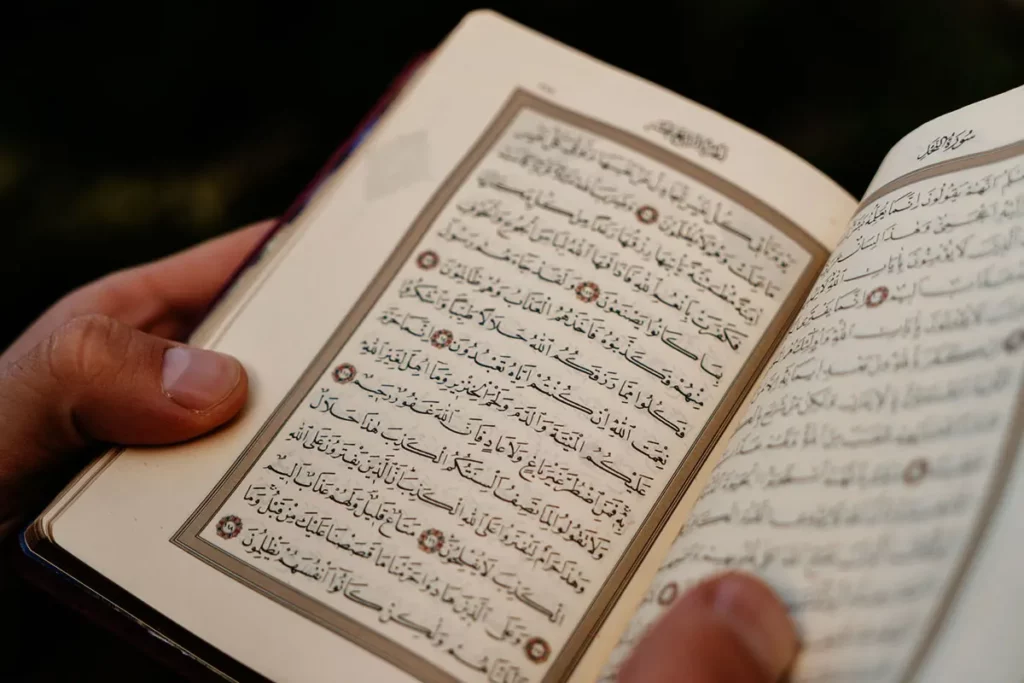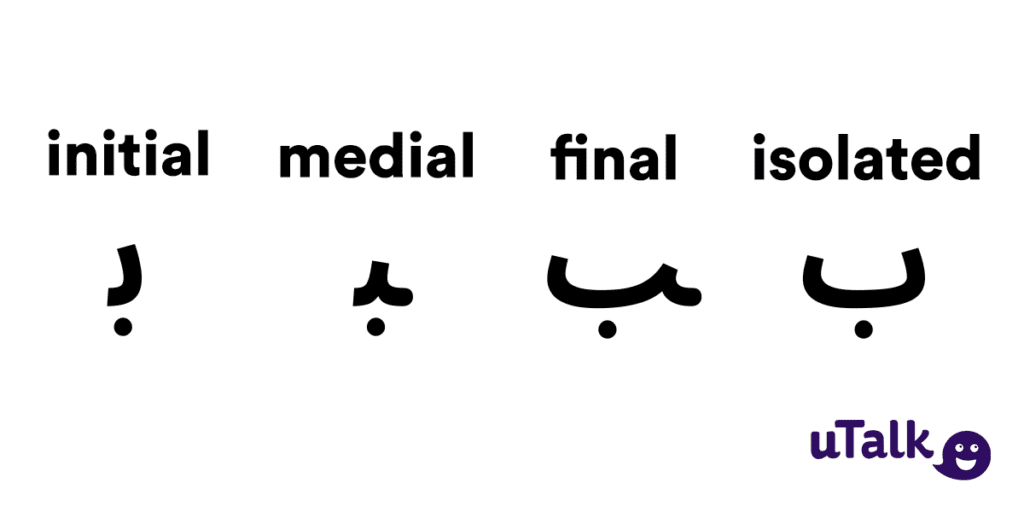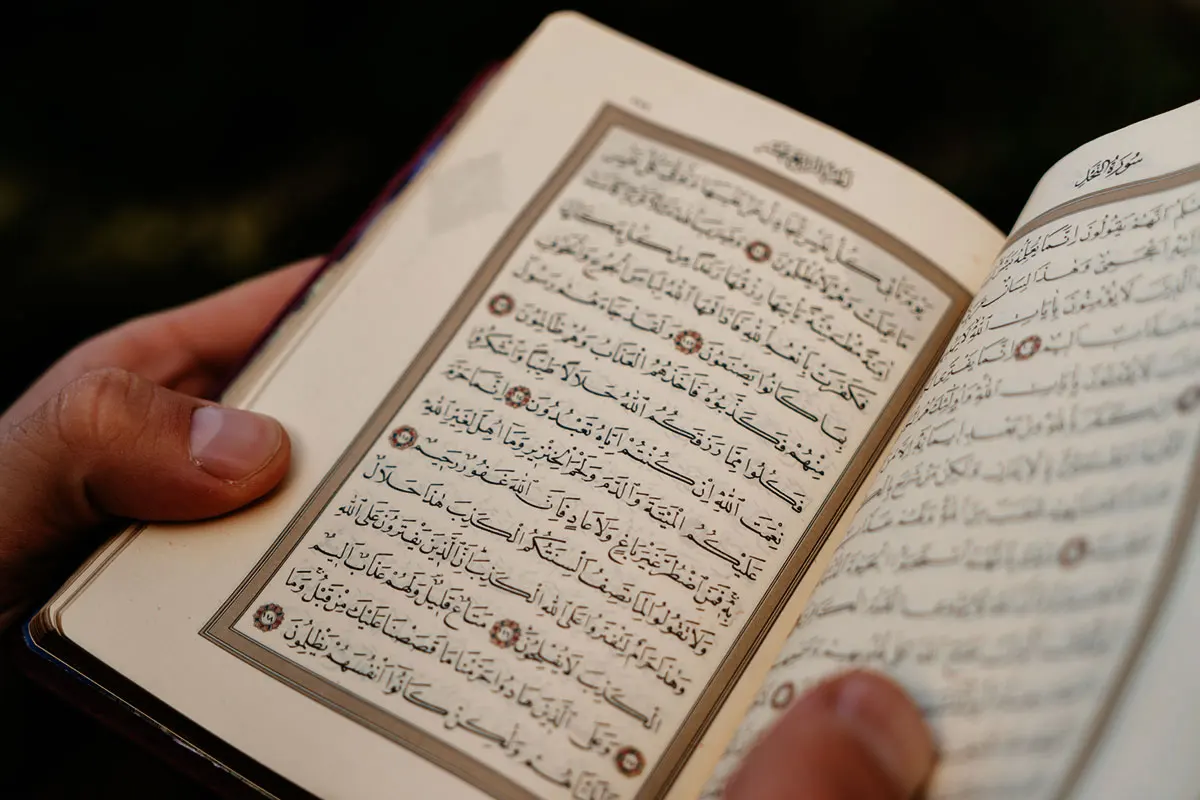
With over 300 million speakers around the globe, Arabic is the fifth most-spoken language in the world. It has many different (colloquial) varieties and is considered to be one of the more difficult languages for English speakers to learn. Discover more about Arabic in this blog post!
What do you know about Arabic?
You might know countries where it’s spoken, or perhaps you’ll have an idea of how different written Arabic looks to the Latin alphabet.
But we’re betting there’s a fact or two on this list that will surprise you!
Let’s find out!
1. Arabic is a Semitic language.
Just like Hebrew, Maltese, Amharic, and Tigrinya, Arabic is a Semitic language. The term ‘Semitic’ was created by members of the Göttingen School of History in the late 1700s to define languages closely related to Arabic, Hebrew, and Aramaic.
This name choice was derived from Shem, one of the three sons of Noah in the biblical Book of Genesis. It came from the Koine Greek Σημ (Sēm), which originally came from the Hebrew שֵׁם (Šēm). Shem was considered the forefather of the Semitic peoples, who spoke Semitic languages.
On a broader scale, the Semitic languages are part of the Afroasiatic language family. Hausa, Oromo, and Somali are other languages in this family, although they are part of different branches. Afroasiatic languages are mainly spoken in North Africa and Western Asia.
Maltese is notable for being the only official language of the European Union that is Semitic (and also Afroasiatic). It derived from late medieval Sicilian Arabic and has been heavily influenced by both Italian and Sicilian. Speakers of Maltese are able to understand about a third of what is said to them by people speaking Tunisian Arabic, whereas Tunisian Arabic speakers can understand around 40% of what is said to them in Maltese.
2. Arabic exhibits diglossia.
Arabic is well-known for its diglossia. Diglossia is when two separate varieties of the same language are used quite normally by its speakers; this usually happens in different social situations. So, people who speak Egyptian Arabic at home, for instance, will sometimes add Modern Standard Arabic (MSA) into their conversation in more formal settings.
The standard prestige language (MSA or Classical Arabic) differs greatly from the colloquial varieties, e.g. Moroccan Arabic or Egyptian Arabic. These colloquial varieties are also not automatically mutually intelligible with each other, or with MSA.
3. MSA is used in formal contexts.
While the colloquial varieties of Arabic are used in day-to-day speech, there are specific times when MSA might be used. It is spoken in formal contexts, as well as on news broadcasts and for prayers. MSA is the lingua franca of the Arab world.
It is also the liturgical language of Islam, which means it is often used mostly for religious reasons among its speakers.
4. Arabic is the official language of 26 countries.
There are 26 different countries that list Arabic as their official language (or one of their official languages). These are:
- Algeria
- Bahrain
- Chad
- Comoros
- Djibouti
- Egypt
- Iraq
- Jordan
- Kuwait
- Lebanon
- Libya
- Mauritania
- Morocco
- Oman
- Palestine
- Qatar
- Saudi Arabia
- Somalia
- Sudan
- Syria
- Tunisia
- United Arab Emirates
- Yemen
Egypt has the highest number of Arabic speakers, followed by Algeria and Sudan. To explain even more about Arabic’s popularity (and comparison with other languages), we’ve written a guide to The Most Spoken Languages in the World, which is updated regularly.
5. Arabic is written using an abjad.
The Arabic script is written using an abjad, rather than an alphabet.
Abjads are writing systems where only consonants are represented. The reader has to infer the vowel sounds for themselves. In the Arabic script, short consonants and long vowels are represented by letters. However, short vowels and consonant length are not generally indicated in writing.
Only religious texts, children’s books, and works for learners are written with the full vowel guides and consonant lengths in Arabic. Still, sometimes authors add diacritics (accents or other signs, e.g. the accent mark above é or ñ) to words or letters if the grammatical case or meaning might be ambiguous without them.
6. The oldest continuous Arabic text dates back to 125 CE.
Three lines of poetry were found in En Avdat, Israel, written in an ancestor to the modern Arabic script. Having been dated to around 125 CE, this makes them the earliest evidence of continuous Arabic script.
The oldest surviving papyrus written in Arabic dates to 643 CE.
7. The first Arabic dictionary was compiled in the 8th century.
Al-Khalil ibn Ahmad al-Farahidi, a philologist, lexicographer, and grammarian from Oman, compiled the first Arabic dictionary during the 8th century. It is one of the earliest known dictionaries of any language and is known as Kitab al-‘Ayn or Kitāb al-‘Ayn (كتاب العين).
The original manuscript copy by al-Farahidi seems to have disappeared in the fourteenth century. The dictionary does not follow any alphabetical order that would be used today. Instead, al-Farahidi devised his own phonetic system that followed the pattern of pronunciation in the Arabic alphabet, with consonants grouped according to their vocalisation characteristics.
These characteristics are: from the throat; from the soft palate (the back, muscular part of the roof of the mouth); from the palate (the roof of the mouth); from the teeth and the tip of the tongue; from the prepalate (the front third of the palate); from the gums; from the apex of the tongue; from the lips; and from the palate with the emission of air.
8. Arabic was standardised by the end of the 8th century.
Classical or Quranic Arabic developed from the Old Hijazi dialect of West Arabic. This was the regional dialect between the first and seventh centuries CE. This was then standardised during the eighth century and now, MSA is used as a simplified derivative of Classical Arabic.
9. ‘Arabic’ can refer to many different languages.
When Western linguists use the term ‘Arabic’, it usually refers to Standard Arabic, which is divided into Classical Arabic and MSA.
But ‘Arabic’ can also be used informally to refer to any of the regional varieties of Arabic, which are not necessarily mutually intelligible with each other.
10. The difference between Arabic varieties is like the difference between Romance languages.
From a linguistic standpoint, it is often said that the various spoken varieties of Arabic (Egyptian, Moroccan, Tunisian, Levantine, etc.) differ from each other about as much as the Romance languages (French, Spanish, Italian, Romanian, etc.). Still, these varieties are often referred to as ‘dialects’, even by their speakers, and generally have not been standardised.
11. English borrows words from Arabic.
Plenty of languages borrow from English, but English has also borrowed many words from Arabic. Many travelled through Greek, Latin, and other languages before reaching English. Here are some examples:
- coffee – from Arabic قَهْوَة (qahwa), meaning ‘coffee, a brew’. Came to English through Ottoman Turkish قهوه (kahve, ‘coffee’) and Italian caffè (‘coffee’).
- ghoul – from Arabic غُول (ḡūl), meaning ‘ghoul, desert demon, jinn’. Came to English via the Persian غول (ğul).
- kismet – from Arabic قِسْمَة (qisma), meaning ‘division, lot, destiny’. Came to English via Ottoman Turkish قسمت (kısmet, ‘fate, destiny’).
- sherbet – from Arabic شَرْبَة (šarba), meaning ‘drink’. Came to English through Ottoman Turkish شربت (şerbet) and then Turkish şerbet, which means ‘sherbet’.
- zenith – from Arabic سَمْت (samt), meaning ‘direction, path’. Its fuller form is سَمْت اَلرَّأْس (samt ar-raʾs), which means ‘direction of the head’. Entered English via Medieval Latin cenit, which became Middle English cenyth.
12. Egyptian Arabic is the most spoken colloquial variety of Arabic.
Egyptian Arabic, which is also known as Colloquial Egyptian or Masri, is spoken by 67 million people in Egypt. Egyptian films and TV are widely distributed throughout the Arabic-speaking world, so it is also one of the most understood varieties of Arabic outside of the country.
13. Most Arabic letters can be written in four different ways.
Depending on where a letter falls in an Arabic word, it can be written in a different way. It’s like writing in cursive in English!
Most letters have a different form depending on whether they are:
- an initial (appearing at the beginning of a word)
- a final (appearing at the end of a word)
- a medial (appearing in the middle word)
- isolate (appearing on their own)
For example, the letter bā’ (the second letter in the alphabet, sounds like /b/) can be written:

If you look letters up on their own, they will usually be in their isolated forms.
Of the 28 basic Arabic letters, six have two forms (the same for final/medial and the same for initial/isolated) and the rest display all four.
14. There is no verb ‘to be’ in Arabic.
Well, at least, not as we know it.
When you’re saying a simple positive sentence in the present tense, then in Arabic, you wouldn’t say the verb ‘to be’.
For example, in Arabic, ‘I am the teacher’ would be ‘I the teacher’.
However, if you’re saying a negative sentence in the present tense (e.g. ‘I am not the teacher’) or talking about the past tense (e.g. ‘I was a teacher’), then you would use the verb ‘to be’.
(The verb is كانَ (kāna), in case you were wondering!)
15. Arabic has a huge number of words referring to camels.
Every language features a detailed set of terms for things that are culturally significant, and Arabic is no exception. There are an incredible number of words referring to camels, some of which get very specific.
For example:
- إبل – ibil – camels.
- بعير – ba’eer – a group of camels in general.
- جمل – jamal – male camel.
- ناقة – naqa – female camel.
- ضائل – da’eel – strong male camel.
- حرذون – hardhoon – bareback camel riding.
- جداجة – jidajah – camel saddle.
- الغب – al ghib – a camel that drinks water every two days.
- ربع – riba’a – a camel that drinks water every three days.
- ظاهرة – dhahira – a camel that drinks water every day.
- الرفة – al riffah – a camel that drinks at any time.
- ملحاح – milhah – a camel that hardly leaves the water basin place.
- جفول – jafool – a camel that is easily scared.
- شرود – sharood – a camel that likes to escape and is hard to catch.
- قوداء – kawda’a – a camel that always leads the other camels.
- وجناء – wajna’a – a camel only used for riding.
- ذود – dhawd – a group of three to ten camels.
- رسل – rosl – about ten camels, or between 15 and 25.
- جول – jool – thirty to forty camels.
- ليلى – laila – three hundred camels.
The word camel also comes from the Proto-Semitic *gamal-, which is where the word ‘jamal’ جَمَل (male camel, but also the general word for camel in Arabic) comes from. To get into English, it went through a Semitic language to Ancient Greek (κάμηλος ‘kámēlos’), Latin (camēlus), Old Northern French (camel), and finally Old English (camel).
16. Numbers in Arabic are written left-to-right.
Although Arabic words are written right-to-left, numbers are written left-to-right!
17. The Arabic alphabet is used to write a lot of different languages.
The Arabic alphabet is also used to write Persian, Malay (Jawi), Uyghur, Kurdish, Punjabi (Shahmukhi), Sindhi, Pashto, Urdu, and Somali, as well as a few other languages.
Until 1928, it was also used to write Turkish. Now, Turkish uses a modified version of the Latin alphabet.
18. Lots of languages also used to use the Arabic script, but no longer do.
Like Turkish, there are some other languages which also used to use the Arabic script to write things down. These include:
- Afrikaans (as written among Cape Malays)
- Swahili
- Albanian (Elifbaja shqip)
- Greek (in certain areas of Greece and Anatolia)
- Mandarin Chinese (specifically by the Hui people)
- Malay (this is still the case in Brunei and parts of Southern Thailand)
19. Arabizi is used by Arabic speakers to chat online.
Computers and the internet have primarily been encoded to use the Latin alphabet, so Arabic speakers have had to find more effective ways to write their script. The result is Arabizi, which refers to Romanised alphabets used by speakers of different varieties of Arabic.
In Arabizi, the Arabic script is transcribed with a combination of Latin script and Arabic numerals.
As an example, the phrase صباح الخير (sabah alkhayr) means ‘good morning’. If you were writing this in Arabizi, you would say ‘9ba7 el 5air’. Generally, Arabizi is used by young Arabic speakers who are communicating digitally, so on social media or when chatting via messenger apps.
20. Arabic is one of the hardest languages for English speakers to learn.
If you’re a native English speaker, then Arabic is considered to be one of the hardest languages for you to learn! The US Foreign Service Institute, which trains diplomats in different languages, suggests it takes 2,200 hours to reach a high level.
In comparison, French, Spanish, or Dutch would take around 575-600 hours, Swahili would take around 900 hours and Hebrew, Hindi, or Persian would take about 1,100 hours.
We hope you’ve enjoyed this article and learning more about Arabic. Want to learn more? Start learning the language with us! uTalk features five varieties of Arabic (Egyptian, Gulf, Lebanese, Moroccan, and MSA). You can start learning one of them or, if you fancy learning even more languages, get access to our great-value All Languages subscription for one low monthly price. Plus, get 40% off your next subscription by using this link. Happy language learning!
